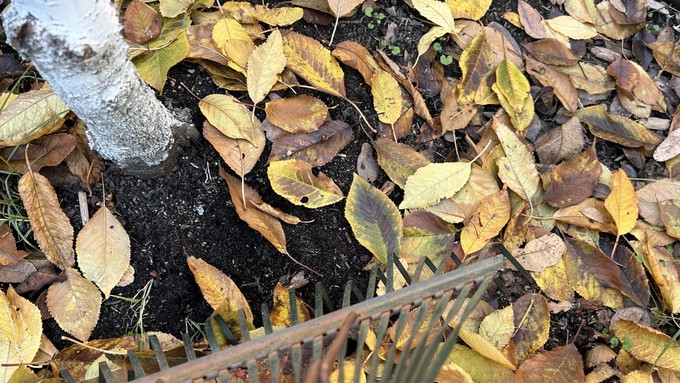
Sacramento forecast calls for three days of steady rain

Get that rake busy, especially if there are leaves in the gutter or up around the stems or trunks of dormant trees, shrubs and perennials. (But leave a least some of the leaves on open ground for insects and as weed-smothering mulch.) Kathy Morrison
Get ready for rain – for real, this time.
According to the National Weather Service, Northern California should expect three days of steady rain, coming soon. Sacramento could get 2 to 3 inches with this storm starting late Sunday night. For Monday and Tuesday, the weather service forecasts “definite rain showers and thunderstorms.”
Rain is expected to continue through Wednesday evening, tapering off through the day.
We need it. So far, December has yielded only 0.65 inches of rain in Sacramento. Normal for this month: 3.25 inches.
Temperatures will be on the mild side with highs hovering around 60 degrees each day. Overnight lows will be comparatively warm – 54 degrees on Tuesday and 52 on Wednesday. Sacramento’s average high for December is 54 degrees.
Those warmer-than-average temperatures reflect the origin of this winter storm; this is a slow-moving Pacific system coming from the west, not the north.
Tackle garden chores before the rain arrives. Afterwards, your landscape likely will be pretty soggy.
* Thursday is the first official day of winter and the shortest day of the year. After the soil dries a bit, it'll be a great time to plant garlic and onions for harvest in summer.
* Rake leaves away from gutters and storm drains.
* Prune non-flowering trees and shrubs while they're dormant.
* Clean and sharpen garden tools before storing for the winter.
* Move poinsettias indoors and out of the rain. Keep them in a bright and warm location.
* Rake and remove dead leaves and stems from dormant perennials.
* Just because it rained doesn't mean every plant got watered. Give a drink to plants that the rain didn't reach, such as under eaves or under evergreen trees.
* Bare-root season is now in full force. Plant bare-root berries, kiwifruit, grapes, artichokes, horseradish and rhubarb. Beware of soggy soil. It can rot bare-root plants. If you have bare-root plants that didn’t get into the ground before the storm, soak their roots in water or pot them up in 1- or 5-gallon containers. Bare-root roses, for example, can be kept in water up to a week.
Comments
0 comments have been posted.Sacramento Digs Gardening to your inbox.
Sites We Like
Garden Checklist for week of July 21
Your garden needs you!
* Keep your vegetable garden watered, mulched and weeded. Water before 8 a.m. to reduce the chance of fungal infection and to conserve moisture.
* Feed vegetable plants bone meal, rock phosphate or other fertilizers high in phosphate to stimulate more blooms and fruiting. (But wait until daily high temperatures drop out of the 100s.)
* Don’t let tomatoes wilt or dry out completely. Give tomatoes a deep watering two to three times a week.
* Harvest vegetables promptly to encourage plants to produce more. Squash especially tends to grow rapidly in hot weather. Keep an eye on zucchini.
* Pinch back chrysanthemums for bushy plants and more flowers in September.
* Remove spent flowers from roses, daylilies and other bloomers as they finish flowering.
* Pinch off blooms from basil so the plant will grow more leaves.
* Cut back lavender after flowering to promote a second bloom.
* It's not too late to add a splash of color. Plant petunias, snapdragons, zinnias and marigolds.
* From seed, plant corn, pumpkins, radishes, winter squash and sunflowers.